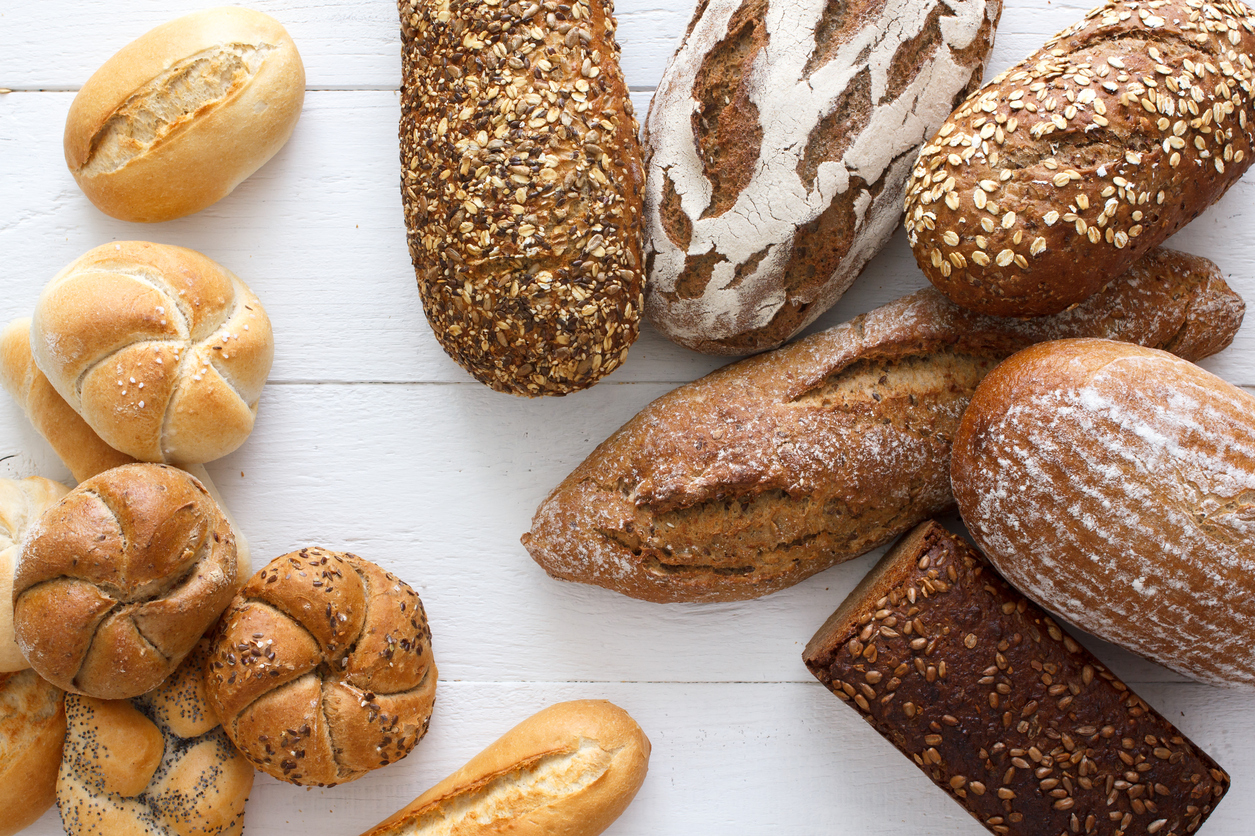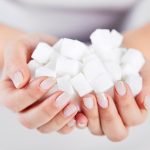Short Answer- Yes, as long as it’s 100% “whole” wheat bread (check the label!). Breads made from “wheat flour” aren’t really any different from white. “Whole” grain breads are also a healthier choice than white.
Look For “Whole” Wheat Or Grain
When it comes to health, both whole wheat and whole grain are better choices than plain ole’ white bread. It’s the word “whole” you want to look out for on the label. This means that the bread was made using the entire kernel, which gives you the most nutritional bang for your buck.
White flour uses only the starchy endosperm portion of a wheat kernel. If the label says “whole wheat” this means the bread uses the entire wheat kernel (the bran, the endosperm, and the germ).
“Whole grains” also contain all parts of the kernel. The grain may be something other than wheat (like spelt, oats, or barley) but the nutrient rich parts are still present. This is key.
Whole wheat and grain are much higher in fiber, vitamins B6 and E, magnesium, zinc, folic acid and chromium than white bread. That extra fiber is the real hero, fiber can help lower the risk of heart disease and boost digestive health.
Read Labels Carefully
When buying bread, read labels carefully. Look at the ingredient list to see if the first ingredient is “whole wheat”, “whole wheat flour”, or some other kind of “whole grain”. If you don’t see the word “whole” on the package, it means the bread may not contain the entire kernel. Misleading labels like “wheat”, “multigrain”, “ground wheat flour”, or “organic wheat flour” are NOT whole wheat. Don’t be fooled by marketing!
Also look for 100% whole wheat or 100% whole grain to be sure they don’t sneak some other type of refined flour into the mix. The bread should also give you 3 grams of fiber or more per serving.
Another clever trick to watch out for is if the package says 100% whole wheat, but the ingredient label doesn’t list “whole wheat” as the top ingredient. This could mean the manufacturer simply added bran and germ to regular enriched flour (rather than giving you the full nutritional value of whole wheat). You probably want to pass this bread by and choose one with whole wheat or whole grain as the first ingredient.
Certified Organic
There are other items to consider when buying bread. If you’re concerned about potential exposure to pesticides or GMOs, in addition to buying “whole wheat”, look for the “certified organic” label as well.
Watch For Added Sugar
Another thing to watch out for in store-bought bread is added sugar. While we don’t see anything wrong with adding a little honey (the operative word here being “little”) to bring out the sweetness in whole wheat bread, some companies use ingredients we’d rather steer clear of like high fructose corn syrup (HFCS), GMO sugar made from sugar beets, or artificial sweeteners like “Sucralose”. Each one of these sweet sources comes with its own potential health risks.
Check labels! Note how much sugar there is per serving, and what the source of that sugar is. Steer clear of breads with artificial sweeteners or added sugars (particularly HFCS). Keep in mind that ingredients are listed by weight. The farther down sugar is listed on an ingredient list, the less there is in the bread. Sugar may also be hiding behind an alias. Other names for sugar to watch out for include:
- Corn sweetener
- High fructose corn syrup
- Brown rice syrup
- Cane juice syrup
- Evaporated cane juice
- Molasses
- Words ending in “ose” (dextrose, maltose, fructose, glucose, sucrose,etc.)












